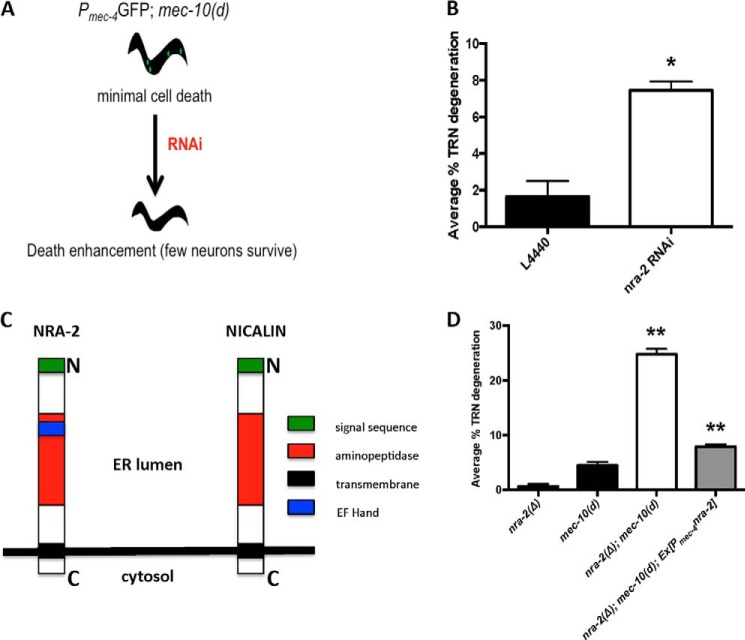FIGURE 1.
nra-2 disruption enhances mec-10(d)-induced necrosis in C. elegans. A, screen strategy for identification of enhancers of mec-10(d)-induced necrosis. Touch receptor neuron channel subunit mec-10(d) encodes an amino acid substitution in the pore that hyperactivates the channel and induces low levels of necrosis in TRNs, as measured by the number of surviving GFP+ cells. Enhancer loci are identified as those that confer increased levels of necrosis after RNAi knockdown, diminishing the number of apparent GFP-expressing neurons. B, RNAi disruption of nra-2 in strains sensitized for neuronal RNAi enhances mec-10(d)-induced necrosis. Shown is the percentage of TRN necrosis in Pmec-18sid-1-expressing nematodes subjected to nra-2(RNAi) or empty vector control L4440. We scored surviving touch neurons by GFP signal; the percentage of degeneration was determined by the formula ((1 − (x/6)) × 100 where x is the number of surviving neurons. Error bars, S.E.; average of three repeat trials (each with at least 35 L4 animals), *, p = 0.0261, Student's t test. C, NRA-2 is an ER-resident chaperone protein. Shown is comparative domain organization of C. elegans NRA-2 and mammalian homolog nicalin. Nicalin, unlike NRA-2, does not contain an EF hand domain. There is 31% identity and 49% similarity between the two proteins. Domain predictions were made using the ScanProsite Tool (available from ExPASy). D, nra-2 deletion enhances mec-10(d)-induced necrosis. We scored the percentage of degeneration as in B. nra-2(Δ) is nra-2(ok1731); rescue transgene is Ex[Pmec-4nra-2; Pttx-3RFP] Error bars, S.E.; average of three repeat trials (each with at least 30 L4 animals), **, p = 0.0033, one-way ANOVA.

